Smart Manotick Garden Logs: Prep for Ottawa Winter Now
Winter Prep Essentials for Your Ottawa Garden:
- Understand Ottawa's Zone 5a climate, microclimates, and heavy clay soil challenges.
- Follow a fall cleanup checklist: remove annuals, manage perennials, utilize leaves, clean tools.
- Protect plants with deep watering, mulch, burlap wraps, and tree guards.
- Perform final lawn care: mow shorter, aerate, remove leaves, apply winterizer fertilizer.
- Keep a "Smart Garden Log" to track tasks, plant performance, and plan for next year.
- Address common winter prep FAQs for the Ottawa region.
Need help getting your Manotick garden ready for winter? Don't wait until the first snowflake falls!
Introduction: Brrr! Winter's Coming to Manotick – Is Your Garden Ready?
Okay, let's face it, Manotick neighbours – you can almost *smell* the snow coming! That familiar Ottawa winter chill is creeping in, reminding us it's time to swap garden gloves for actual mittens. Brrr! But before we fully embrace hibernation mode with a mug of hot chocolate, our gardens need some important attention to survive and thrive next spring.
Down the road in Greely, over in Barrhaven, and right here in Manotick, our unique climate presents specific challenges. Those harsh temperatures and unpredictable freeze-thaw cycles can be really tough on your soil, perennials, shrubs, and overall landscaping. That’s why getting your fall garden prep done *now*, before the ground freezes solid, is so critical. It’s not just tidying up; it’s essential protection! Check out our Google reviews here: Clean Yards on Google.
To help you tackle this without feeling overwhelmed, we suggest keeping a 'Smart Garden Log'. Think of it as your simple, personalized checklist to track all those crucial winterizing tasks for your specific yard. What did you plant? What needs extra mulch? Did you remember the lawn care? Jotting it down makes spring revival *so* much easier.
This guide will walk you through the key steps for preparing your Manotick garden for the cold months ahead. We'll cover protecting your precious plants, essential fall lawn care, prepping your garden beds for a winter rest, and even knowing what *not* to prune until spring returns. Let’s get your garden tucked in safely!
Decoding Your Digs: Understanding Manotick's Microclimate & Soil
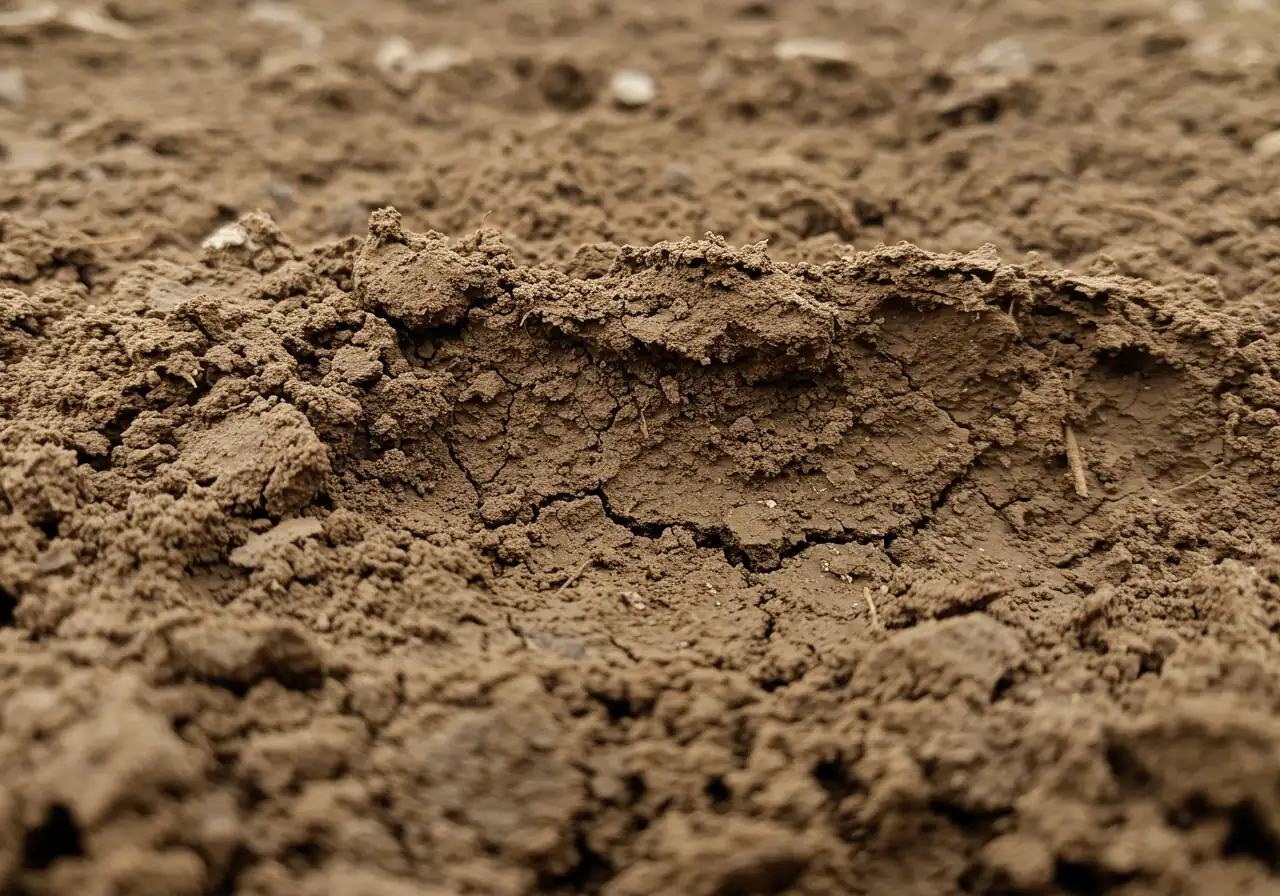
Alright, Manotick gardeners, let's talk dirt – literally! Understanding our local conditions is key to a thriving garden or landscape. Ottawa, including lovely areas like Manotick, Greely, and Nepean, sits mainly in Plant Hardiness Zone 5a. Think of this zone like a clothing size for plants – it tells us which ones are *most likely* to survive our chilly winters. But it’s not the whole story!
We also deal with *microclimates*. Your yard might be slightly different from your neighbour's down the street, especially here in Manotick near the Rideau River. Being close to water can sometimes mean slightly less harsh temperature swings compared to more open areas. However, we all face Ottawa's signature challenge: the freeze-thaw cycle. Winter doesn't just arrive and stay put; it often plays peek-a-boo, freezing the ground, thawing it slightly, then freezing it again. This icy dance can heave plants right out of the soil – sneaky!
Now, let's get our hands dirty talking about soil. Much of our region, including parts of Barrhaven and Manotick, is blessed (or cursed, depending on your mood!) with heavy clay soil. Clay is fantastic at holding onto nutrients, which is great! The downside? It drains *very* slowly (hello, spring puddles!) and can compact easily, making it tough for roots to penetrate. In summer, it can bake into something resembling concrete, making watering tricky. Effective watering becomes crucial; you might want to explore Barrhaven summer irrigation tips to save water to manage this efficiently. For really targeted watering that adapts to clay, considering Barrhaven smart sprinkler systems for water savings in Ottawa could be a game-changer. Understanding this soil behaviour is vital when developing your overall yard vision, whether it's planting beds or dreaming up Barrhaven patio design ideas for summer fun, as drainage and foundations are key.
Proper site assessment, including soil type and drainage, is also fundamental when creating Nepean landscaping plans that align with Ottawa by-laws guide.
Eco-Friendly Soil Tip Before Winter: Give your clay soil a helping hand! Before the ground freezes solid, spread a layer of compost or shredded fall leaves over your garden beds. Don't dig it in deeply; just let it sit on top. Over winter, worms and weather will slowly incorporate this organic matter, improving drainage and soil structure for spring planting. Need help with soil preparation?
Dealing with our unique climate and soil takes a bit of know-how, but it's totally doable! And if testing soil pH or tackling major amendments feels daunting, remember there are professional landscaping and garden maintenance services available to help.
The 'Manotick Tidy-Up': Your Essential Fall Garden Checklist
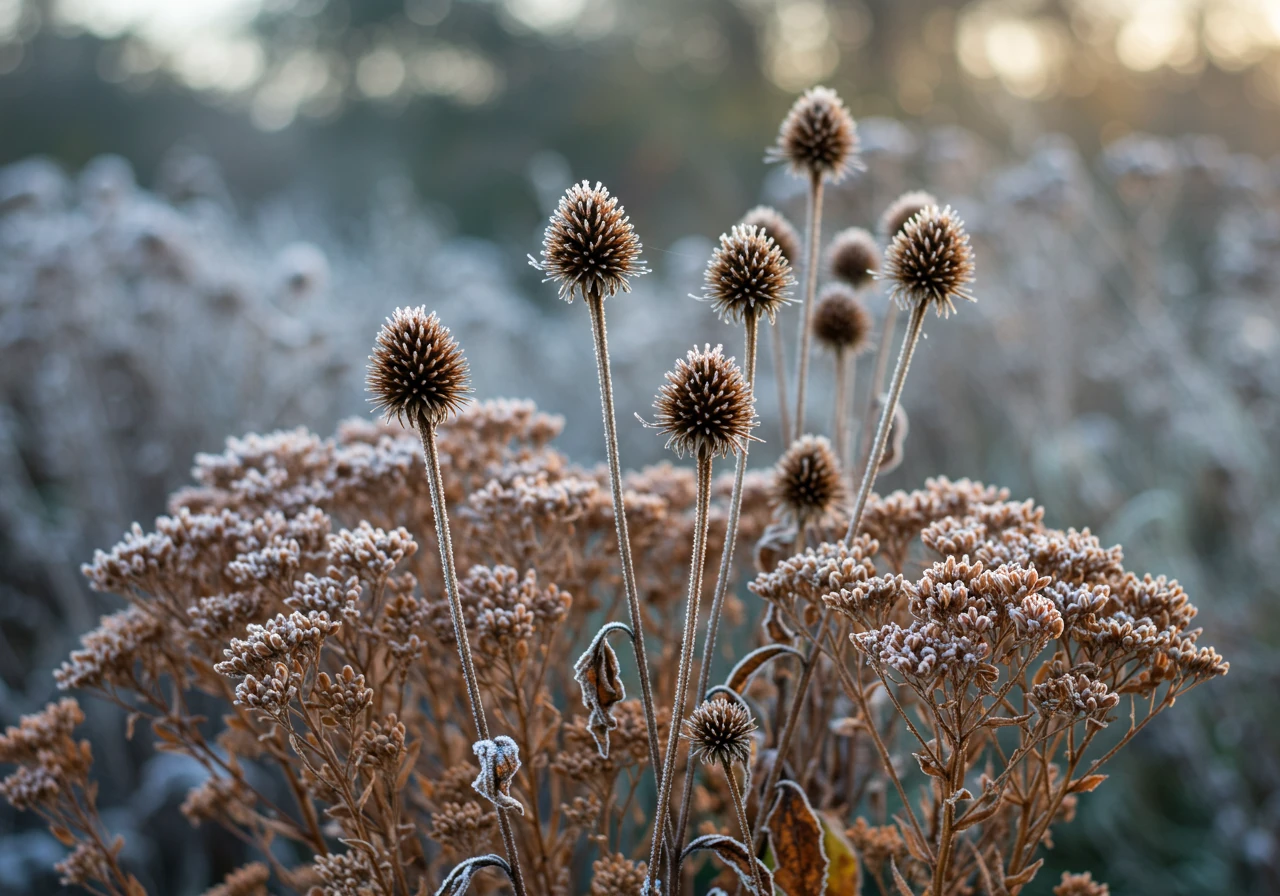
Okay, team Manotick (and neighbours in Osgoode and beyond!), let's roll up our sleeves for the 'Manotick Tidy-Up'. Getting your garden ready for its winter nap isn't just about looking neat; it's about setting the stage for a spectacular spring comeback. Here’s your essential checklist:
- Say Goodbye to Summer Guests (Annuals): Those lovely petunias and marigolds that brightened your summer? Their time is up, unfortunately. Once frost hits, pull out these annual plants. Leaving them to rot can invite diseases and pests. Toss them in the compost bin (unless they were diseased – then they go in the garbage). Clearing them out now also makes space if you're dreaming of potential garden installation projects for next year!
- Perennial Decisions – The Great Debate: What about plants that come back year after year (perennials)? Here’s where things get interesting.
- Cut Back If: The foliage is diseased (like powdery mildew on phlox) or looks really messy and floppy. Cutting back tidies the garden and removes potential hiding spots for pests or disease over winter. Some gardeners simply prefer a cleaner look.
- Leave Standing If: The plants have sturdy stems and attractive seed heads (like Coneflowers, Sedum 'Autumn Joy', or ornamental grasses). These provide winter interest (they look great dusted with snow!) and offer food and shelter for birds. The standing foliage can also offer a little extra winter protection to the plant's crown.
- Pro Tip: If you're unsure about a specific plant, a quick search online or consulting with experts offering garden maintenance can provide specific guidance.
- Leaf Wrangling – Use 'Em, Don't Lose 'Em: Ah, the leaves! Raking seems like the obvious chore, but don't just bag them for the curb. Fall leaves are garden gold!
- Mow Them: Run your lawnmower over leaves on the lawn to shred them into tiny pieces. They'll decompose quickly, feeding your grass.
- Compost Them: Add leaves to your compost pile – they're a fantastic source of 'brown' material.
- Mulch Them: Spread whole or shredded leaves over your garden beds as a natural winter mulch. This insulates plant roots and improves soil as it breaks down. If the volume feels overwhelming, remember there are local services like the Metcalf property cleanup service that can help manage large amounts of yard waste. Find more about property cleanups here and here.
- Tool Time TLC: Your trusty tools worked hard! Show them some love before storing them.
- Clean off all dirt and mud.
- Sharpen blades on pruners, loppers, and shovels.
- Wipe metal parts with an oily rag to prevent rust.
- Store them somewhere dry.
- Tuck Away the Accessories: Gather up garden hoses (drain them completely!), empty pots (clean them to prevent disease spread), trellises, garden ornaments, and patio furniture. Storing these items indoors or in a shed protects them from harsh winter weather, cracking, and fading. It's a task often tackled during a full fall cleanup; if you need assistance with the bigger picture, exploring options like a Kenmore yard cleanup service might be helpful.
Tackling this checklist bit by bit makes fall cleanup manageable. It’s an investment in your landscape's health and ensures a beautiful return next spring here in the Ottawa area. And if life gets too busy, remember that professional help covering a range of landscaping and garden maintenance services is always an option!
Winter Protection Methods
The Mulch Blanket
A 2-4 inch layer of organic mulch (shredded bark, leaves) applied *after* the ground starts to freeze helps stabilize soil temperature, preventing damaging freeze-thaw cycles. Keep mulch away from direct contact with stems/trunks.
Burlap & Wraps
Loosely wrap sensitive evergreens (like Rhododendrons, some cedars) with burlap to protect against windburn and sun scald. Use commercial tree wrap on young tree trunks to prevent sunscald and animal damage. Build A-frames for shrubs prone to snow load damage.
The Last Big Gulp
Water evergreens and new plantings deeply *before* the ground freezes solid. This ensures they are well-hydrated going into winter when they can no longer absorb water from frozen soil but still lose moisture to wind and sun.
Winter Armour: Protecting Plants from Ottawa's Icicle Grip
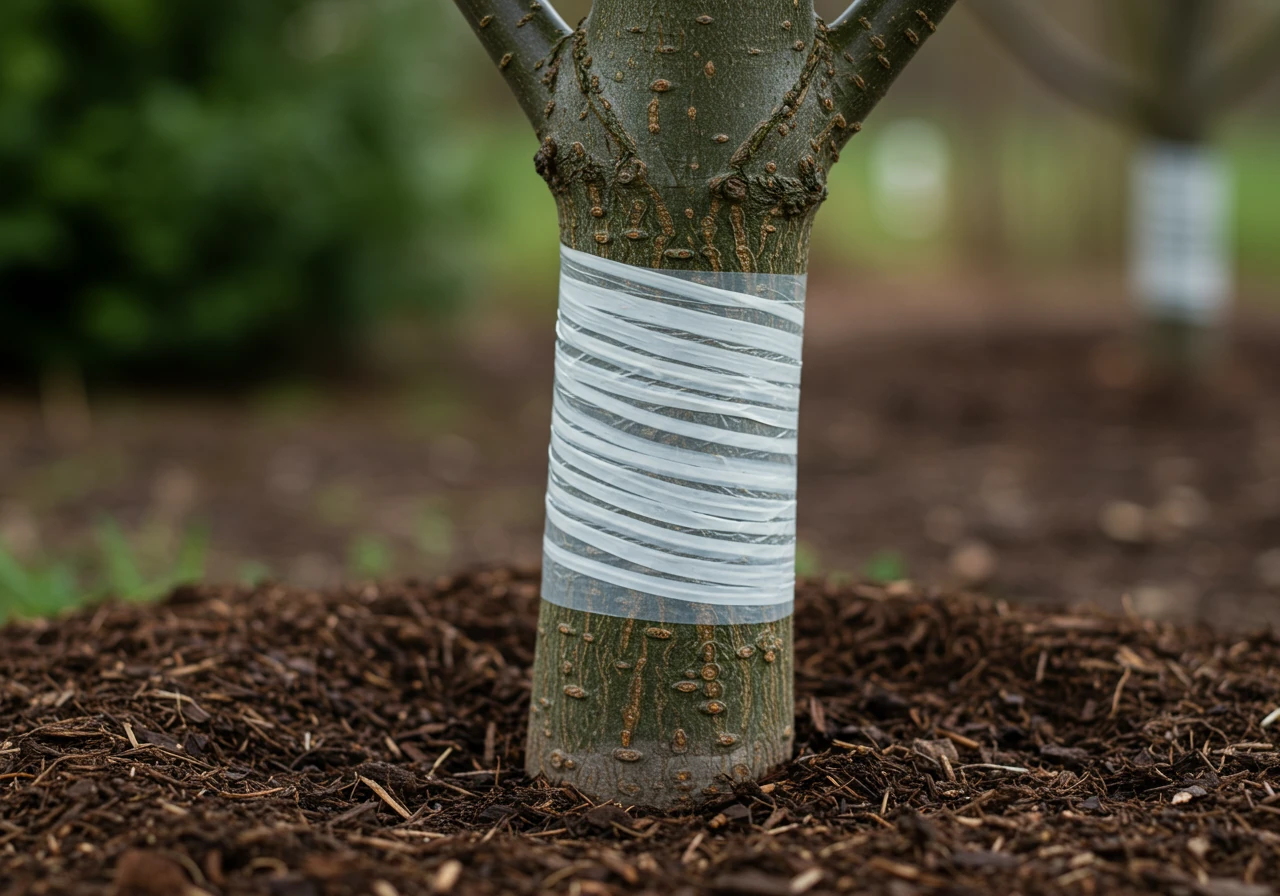
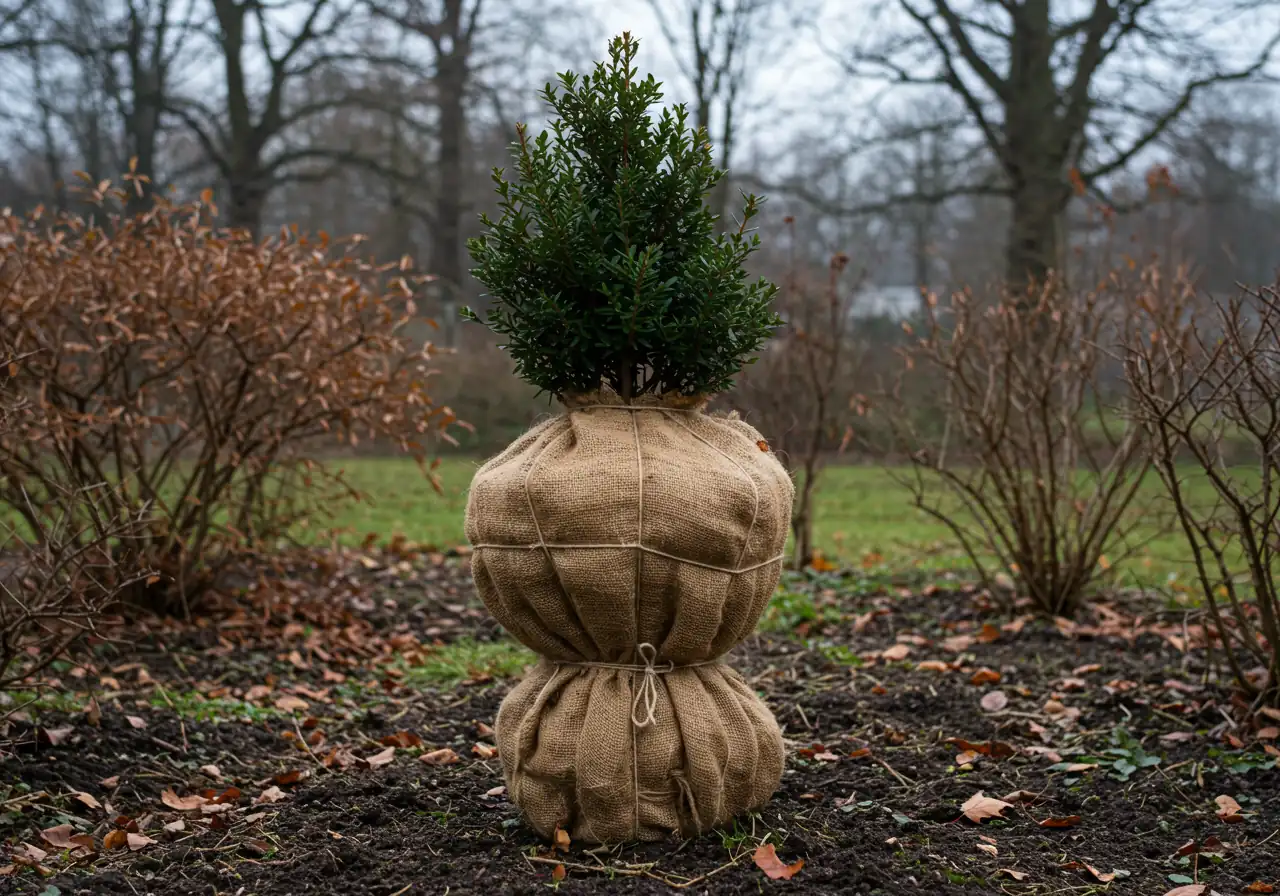
Okay, folks, winter in Ottawa isn't just chilly; it's like Mother Nature decided to test our plants' survival skills with an icy boot camp! From Manotick to Richmond, the freeze-thaw cycle, biting winds, heavy snow, and sometimes even pesky salt spray can really do a number on our beloved greenery. But fear not! With a little "winter armour," we can help our plants brave the cold and bounce back beautifully next spring.
Step 1: The Last Big Gulp (Pre-Freeze Watering)
Before the ground slams shut like a freezer door, give your plants, *especially* evergreens (like cedars, pines, rhododendrons) and newly planted trees and shrubs, a good, deep drink. Why? Frozen ground means plants can't absorb water, but wind and winter sun can still suck moisture out of their leaves or needles (think: nasty windburn). Watering well ensures they go into winter fully hydrated. Aim for a thorough soaking a few days before a hard freeze is expected.
Step 2: The Mulch Blanket
Think of mulch as a cozy duvet for your plant roots. Applying a 2-4 inch layer of organic mulch (like shredded bark, wood chips, or even those shredded leaves we talked about) *after* the ground has started to freeze helps keep the soil temperature stable. It prevents the constant freezing and thawing that can heave plants right out of the ground. Don't pile mulch right up against stems or trunks, though – leave a little breathing room to avoid rot and discourage rodents. Keeping beds clear of excess debris before mulching is key; a thorough property clean up sets the stage perfectly. If you gathered a mountain of leaves for mulch or compost, services like the Metcalf property cleanup service can help manage the excess yard waste generated during your fall prep. Also check our Metcalf yard cleanup service page.
Step 3: Suiting Up - Specific Protection
Different plants need different armour:
- Perennials: Most hardy perennials zoned for Ottawa are tough cookies. Mulch is usually enough. For borderline hardy ones, extra mulch or evergreen boughs laid over the top after the ground freezes can help.
- Tender Shrubs & Evergreens: These guys often need extra help against windburn, sun scald (winter sun reflecting off snow can be intense!), and heavy snow load.
- Burlap Wrap: Loosely wrap susceptible shrubs (especially broadleaf evergreens like Rhododendrons or sensitive cedars) with burlap. Secure it with twine, but don't wrap too tightly – allow for air circulation. This is crucial if you live near roads in areas like Kars or Richmond where salt spray is a concern.
- A-Frames: Build simple wooden A-frames over smaller shrubs to deflect heavy snow and prevent branch breakage. Think of it as a little tent for your plant.
- Young Trees: Protect thin bark from sunscald (which causes cracking) and hungry rabbits or voles by wrapping the lower trunk with commercial tree wrap or plastic guards. Remember to remove these wraps promptly in spring!
- Container Plants: Pots left above ground can freeze solid, killing roots. Options include:
- Bringing pots into an unheated garage or shed (if hardy enough for the cold, just not the pot freezing).
- Sinking pots right into the ground in a vacant garden spot.
- Grouping pots together in a sheltered spot and insulating the cluster with burlap, packed leaves, or even bubble wrap.
Wildlife Watch & Salty Situations:
Deer and rabbits can get extra munchy in winter when other food sources are scarce. Use physical barriers like sturdy wire mesh fencing around vulnerable shrubs or young trees. Repellents can offer some help but often need reapplication, especially after rain or snow. In areas like Vernon or Kenmore close to busy roads, setting up burlap screens on sturdy stakes on the side facing the road can significantly reduce damaging salt spray on sensitive plants like cedars and some pines.
Eco-Friendly Tip: Use cut evergreen boughs (perhaps recycled from your Christmas tree trimming, just ensure they're disease-free) laid over perennial beds or tucked around the base of roses. They insulate beautifully, trap snow (which is nature's best insulator!), allow for air circulation, and look quite natural.
Protecting your plants takes a bit of planning and effort, but it's a worthwhile investment for a healthy return in spring. If tackling burlap wrapping or building A-frames feels like a bigger project than you want to handle, remember professional help is available. You can learn more about us and our approach to handling Ottawa's unique winter landscaping challenges. Managing your service requests, checking schedules, and viewing invoices is straightforward through our online customer portal. And should you ever receive an estimate from us for winter protection or other services, we genuinely value your thoughts – please feel free to use our quick estimate feedback form to share them! Let's give our gardens the best possible defense against that Ottawa icicle grip!
Common Causes of Winter Plant Damage in Ottawa
Lawn Last Call: Prepping Your Turf Before the Snow Blanket
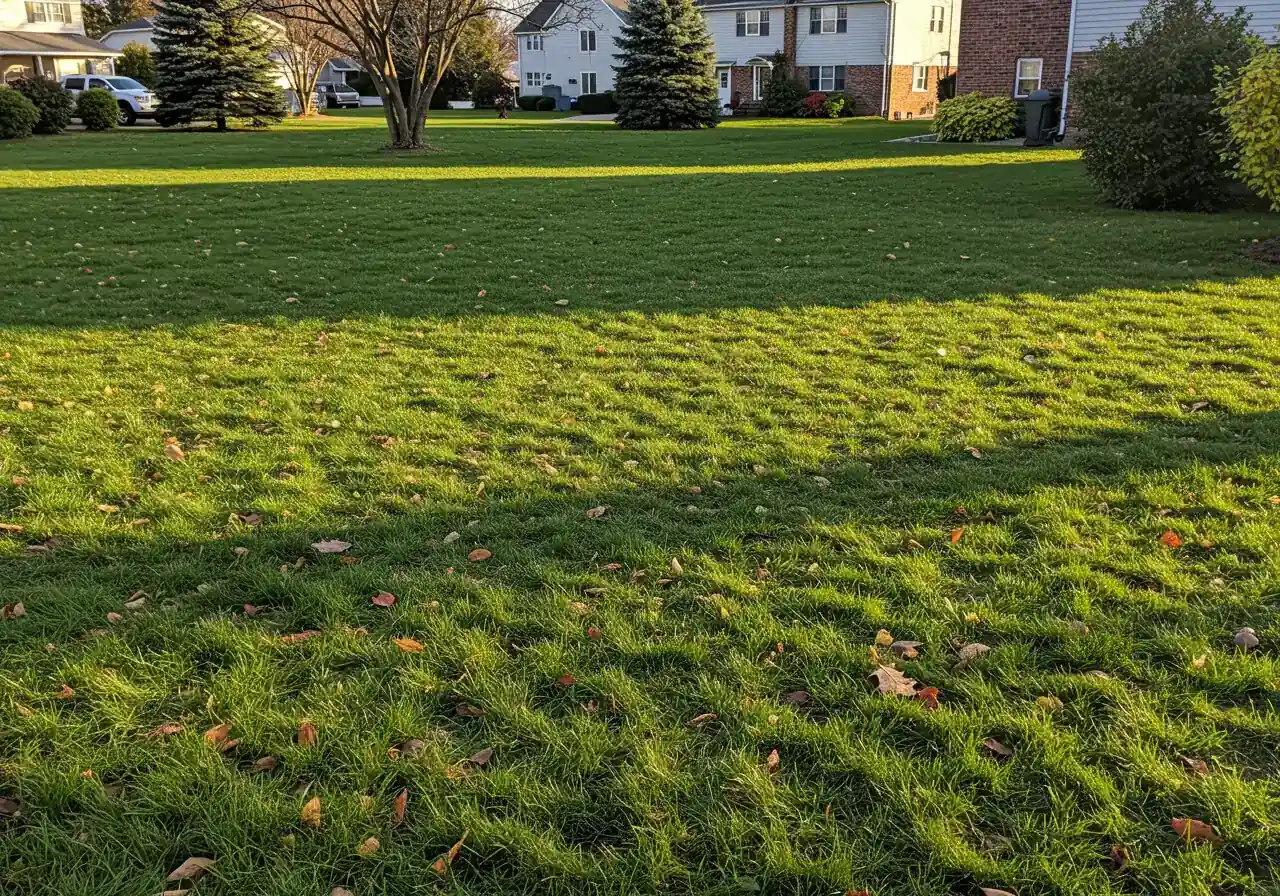
Alright, folks in Barrhaven, Nepean, Manotick, and across Ottawa – hear that? It's the *last call* for your lawn before the big snow blanket arrives! Don't let your turf face the frosty beast unprepared. Giving it some final TLC now makes a *huge* difference for a lush green comeback next spring. Think of it as tucking your grass into bed properly for its long winter nap.
Here’s your quick checklist for late-fall lawn love:
- The Final Haircut: Give your lawn one last mow before putting the machine away. Cut it slightly shorter than your usual summer height – aim for around 2 to 2.5 inches (5-6 cm). This shorter height helps discourage snow mold, a nasty fungal disease that can thrive under snow cover on long grass. But don't scalp it! Leaving a little length helps the grass blades continue photosynthesis as long as possible.
- Let it Breathe (Aerate!): If you haven't already, consider aerating, especially if you battle heavy clay soil common in many Ottawa neighbourhoods. Core aeration pulls small plugs of soil out, relieving compaction and allowing precious air, water, and nutrients to reach the root zone. This encourages deeper, stronger root growth before the ground freezes solid – essential for winter survival and a quick spring green-up. Considering professional help for this? Many comprehensive lawn care programs include aeration. It's always wise to understand the scope of work; details are often found in service agreements or policy pages like our terms and conditions.
- Leaf Relief: We mentioned leaves in the garden tidy-up, but get them off the lawn! A thick mat of leaves will smother your grass, block sunlight, and create a damp environment perfect for diseases. Rake them up for compost or shred them finely with your mower and let the tiny pieces filter down if the layer isn't too thick. A clean lawn breathes easier. See our Ottawa Yard Cleanup Service page for help.
- The Winter Feast (Fertilize): Apply a late-fall "winterizer" fertilizer. This isn't about boosting green top growth; it's about feeding the roots. These special formulas are typically higher in potassium and contain slow-release nitrogen, helping grass develop stronger roots, store energy, and improve cold hardiness. Apply it after the grass has mostly stopped growing but before the ground freezes – usually mid-October to early November around here. You can learn more about our philosophy on nurturing healthy landscapes by reading about us.
- Seedling Send-Off (Overseeding?): While early fall is the ideal time for overseeding, if you have some thin patches and the weather stays mild into late fall, you might still have a small window. The goal is to get good seed-to-soil contact before consistent freezing temperatures or snow arrives. Improving lawn density is one of the most rewarding yard transformations you can achieve. Interested in new grass? Check out our sod installation services.
Eco-Friendly Tip: Opt for slow-release or organic fertilizers to minimize nutrient runoff into waterways. Sweep any fertilizer granules off sidewalks and driveways back onto the lawn. We follow best practices for environmental safety, detailed in our privacy policy.
Putting in this final bit of effort ensures your lawn doesn’t just survive winter but comes back roaring next spring. If tackling these tasks feels like too much before the first snowfall, or if you have specific questions about your lawn's needs, don't hesitate to contact us. Let's get that turf tucked in tight!
Ideal Fall Garden Prep Timeline (Ottawa)
Late Sept - Early Oct
Plant spring bulbs (tulips, daffodils). Divide overcrowded perennials. Overseed lawn if needed. Assess plant health and note issues in your log.
Mid - Late October
Clean up annuals after frost. Make decisions on cutting back perennials. Start major leaf cleanup. Aerate lawn. Clean and store tools. Consider material selection for next year's projects.
Early - Mid November
Apply winterizer lawn fertilizer. Final lawn mow (slightly shorter). Deep water evergreens & new plants before ground freeze. Apply winter mulch *after* ground starts to freeze. Protect vulnerable shrubs/trees (burlap, wraps).
Late November / Before Heavy Snow
Drain and store hoses. Bring in empty pots. Ensure gutters are clear. Install snow stakes. Check that all protection (wraps, A-frames) is secure. Relax and thank yourself for the hard work!
Your Smart Garden Log: More Than Just Chores, It's Future Planning!
Okay, let's talk about turning those fall gardening chores into gold for next spring! Keeping a "Smart Garden Log" might sound fancy, but it's basically your garden's diary. And *now*, while everything is fresh in your mind (like where you *just* planted those daffodil bulbs!), is the *perfect* time to make some entries. This isn't just about remembering tasks; it’s about smart future planning for your landscaping efforts.
Think about it: how many times have you stood in your garden come spring, scratching your head, wondering, "Did that rose bush get black spot *again* last year?" or "Where on earth did I put those fancy tulips?" A simple log solves this! Whether you're gardening in Winchester, tending flower beds in Russell, or landscaping in Manotick, noting down observations now saves guesswork later. Trust us, it beats trying to remember details after six months of Ottawa winter!
What should you jot down?
- Performance Review: Which plants were stars? Which ones sulked (maybe the soil needs help – remember noting this can guide future soil preparation)? Record specific varieties if you can.
- Problem Patrol: Record pest infestations (pesky critters!), diseases, or areas with poor drainage. Note what you tried and if it worked.
- Success Stories: What worked beautifully? A new variety? A companion planting combo? Pat yourself on the back and make a note to repeat it!
- Bulb Beacon: Seriously, make a little map or note of where you planted spring bulbs. Future You digging them up accidentally while planting annuals will *not* be pleased.
- Cleanup Checklist: Note what you pruned back hard, what got winter protection (like burlap wrap or mulch), and any major cleanup tasks tackled – the kind of thorough work done by professionals like the Marionville property cleanup service.
- Dream Board: Use it to sketch ideas for next year – "Move hostas," "Need taller plant here," "Consider adding a path." This is where your log helps envision amazing future garden transformations. See our gallery for inspiration.
Keep it simple! A dedicated notebook, a spreadsheet, or even a notes app on your phone works fine. Maybe create simple columns for: Date, Plant/Area, Observation/Task, and Note for Next Year. These are *your* personal gardening notes, your garden's unique story – keep them handy and private, just like we protect your customer information as outlined in our privacy policy.
Taking a few minutes to log things while you're doing your fall cleanup makes spring planning *so* much easier and more effective. Your future self, relaxing with a lemonade instead of puzzling over past problems or forgotten plans, will definitely send a big thank you for planning ahead your way!
Highlight Box: Ottawa Winter Prep Quick Wins!
Okay Ottawa neighbours, winter's knocking! Feeling overwhelmed? Don't sweat it! Here are five super-quick things you can do *right now* to give your yard a fighting chance against the deep freeze, without needing a whole weekend. Think of these as your cheat sheet for happy spring landscaping!
- Wrap Those Trunks! Got young trees? Slap some tree wrap or plastic guards around their lower trunks. Takes five minutes per tree and saves them from nasty winter sunscald and becoming bunny snacks. Simple but effective!
- Hose Down & Store Up! Drain garden hoses *completely* (that sneaky frozen water expands!) and store them indoors or in the shed. Same goes for empty ceramic or terra cotta pots – bring 'em in! Quick cleanup now prevents sad, cracked casualties later. If the fall cleanup left you with more than just hoses to manage, consider looking into professional help like a thorough Marionville property cleanup service to handle the bigger stuff.
- Gutter & Drain Patrol: Seriously, take 10 minutes to clear leaves and gunk from gutters, downspout openings, and window wells. Clogged drains near the house are an invitation for ice dams and potential basement leaks when the thaw comes. This quick check can save major headaches. A clean foundation area is part of any good garden clean up service in Marionville.
- Batten Down the Hatches: That lightweight patio chair? The cute garden gnome? Secure them! Ottawa winds and heavy snow can turn loose items into projectiles or bury them until May. A quick walk around to store or anchor things prevents surprises. Need inspiration for how tidy things *could* look? Check out some finished projects in our landscape project photo gallery.
- Stake Your Claim! Grab some driveway markers or tall stakes and place them along the edges of your driveway and walkways, especially near garden beds. This simple step helps guide snow blowers or plows (yours or a contractor's!), preventing accidental lawn scalping or damage to hidden landscaping features. It makes winter maintenance, like that provided by a Metcalf garden clean up service focusing on bed edges, much safer next spring.
See? Fast and effective! Doing even a few of these quick wins puts your Ottawa yard ahead of the game for winter. High five!
Find reputable Ottawa resources here: City of Ottawa Trees & Forests and the Ottawa Horticultural Society. For watershed info, see the Rideau Valley Conservation Authority.
FAQs: Your Manotick & Ottawa Winter Garden Questions Answered
Winter gardening prep in Ottawa can feel like trying to guess the weather forecast – tricky! But don't worry, you're not alone. We get lots of questions from folks in Manotick, Greely, Barrhaven, and beyond. Here are answers to some common head-scratchers:
Ideally, no! The real deadline is before the ground freezes solid, which usually happens sometime in November around here. Aim to get most tasks, like planting bulbs, applying mulch, and final lawn care, done by mid-November. Waiting for snow means the ground might already be too hard for roots to take up that last drink or for mulch to do its job effectively.
Absolutely! That heavy clay soil benefits hugely from mulch in winter. A good layer helps regulate soil temperature, preventing the damaging freeze-thaw cycles that can heave plants right out of the ground. Plus, as organic mulch breaks down, it improves that tough clay structure over time. Consider it a cozy, protective blanket! If tidying bed lines first sounds good, look into professional mulching and edging.
It's a mix! Cut back perennials with diseased foliage (like powdery mildew) or those that get really floppy and messy. But leave sturdy plants with interesting seed heads (like Coneflowers or ornamental grasses) standing. They add winter interest, provide food for birds, and trap insulating snow. There's no single right answer for every plant, so do what looks best and feels right for your garden.
Ah, the dreaded cedar winter burn! This is usually caused by harsh winds and winter sun drying out the needles when the ground is frozen. Water them deeply before the ground freezes solid. For extra protection, especially for exposed cedars, consider wrapping them loosely in burlap. Ensuring the area around them is clear is also part of good prep, often handled during a comprehensive Ottawa garden clean-up service.
Heavy, wet Ottawa snow *can* definitely damage shrubs, especially multi-stemmed ones or upright evergreens. Gently brush snow off branches with a broom (sweeping upwards) after heavy falls if you can. For vulnerable shrubs, you could build simple A-frame shelters over them before winter hits, or tie up branches loosely with soft twine to help them bear the load.
Don't despair! Even if it feels late, getting leaves off the lawn is important to prevent smothering the grass and encouraging disease. Rake them onto garden beds as mulch, add them to your compost, or shred them with your mower. If the volume is just too much, professional help is available; check out local options like the Marionville yard cleanup service for assistance. Feeling overwhelmed? You can always book a free estimate to discuss your needs.
Conclusion: Tuck Your Garden In & Dream of Spring Blooms!
Phew! You've wrestled the leaves, given the lawn its final trim, and maybe even swaddled a shrub or two in burlap. Go ahead, give yourself a high-five! Getting your garden ready for its long winter nap here in the Ottawa area – whether you're in Manotick, Greely, or Osgoode – is no small feat. But remember, all that tidying, protecting vulnerable plants from our notorious freeze-thaw cycles, prepping the lawn, and jotting notes in your Smart Garden Log is a direct investment in *next* year's beauty. You're not just cleaning up; you're setting the stage for vibrant spring blooms and a healthier, easier-to-manage landscape overall. Think of it as saving your future self some springtime sweat!
Feeling like Jack Frost beat you to the punch, or just want an expert eye to ensure everything is buttoned up tight before the real cold hits? No worries! We can still help get your yard winter-ready.
- Need help with that final, crucial leaf cleanup or yard debris removal?
- Concerned about protecting specific shrubs or young trees with proper burlap wrapping or guards?
- Want a consultation to ensure your Manotick, Greely, or Osgoode garden is fully prepped for winter survival?
Let us handle the final tuck-in so you can focus on the cozy indoors. Contact Clean Yards today for a free estimate and dream easy of those beautiful spring blossoms!

